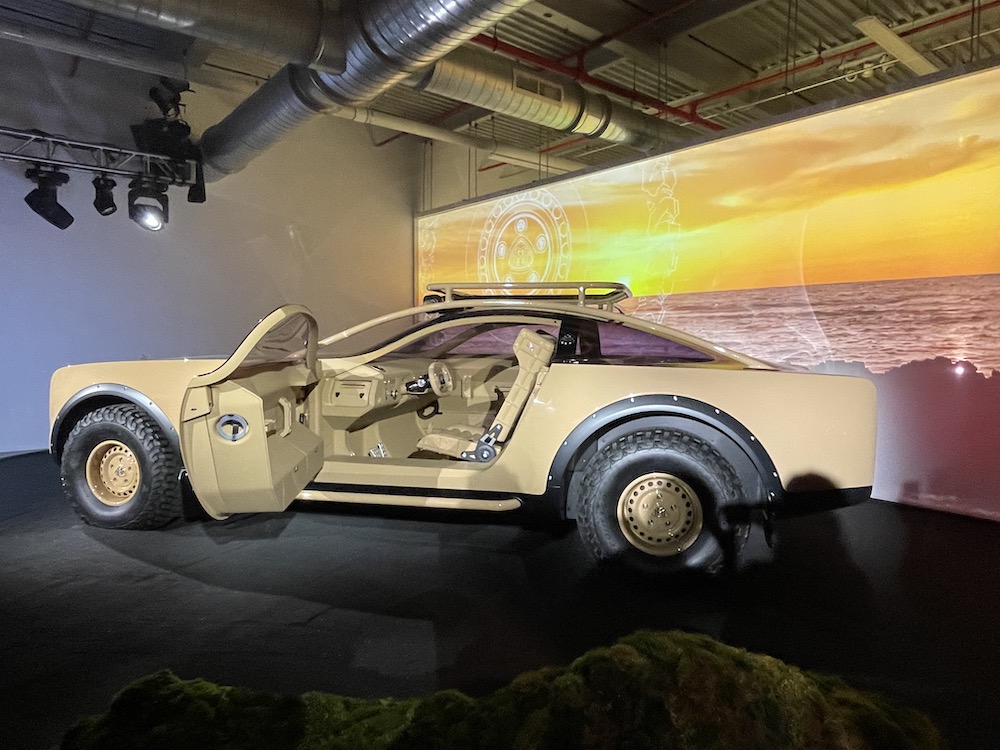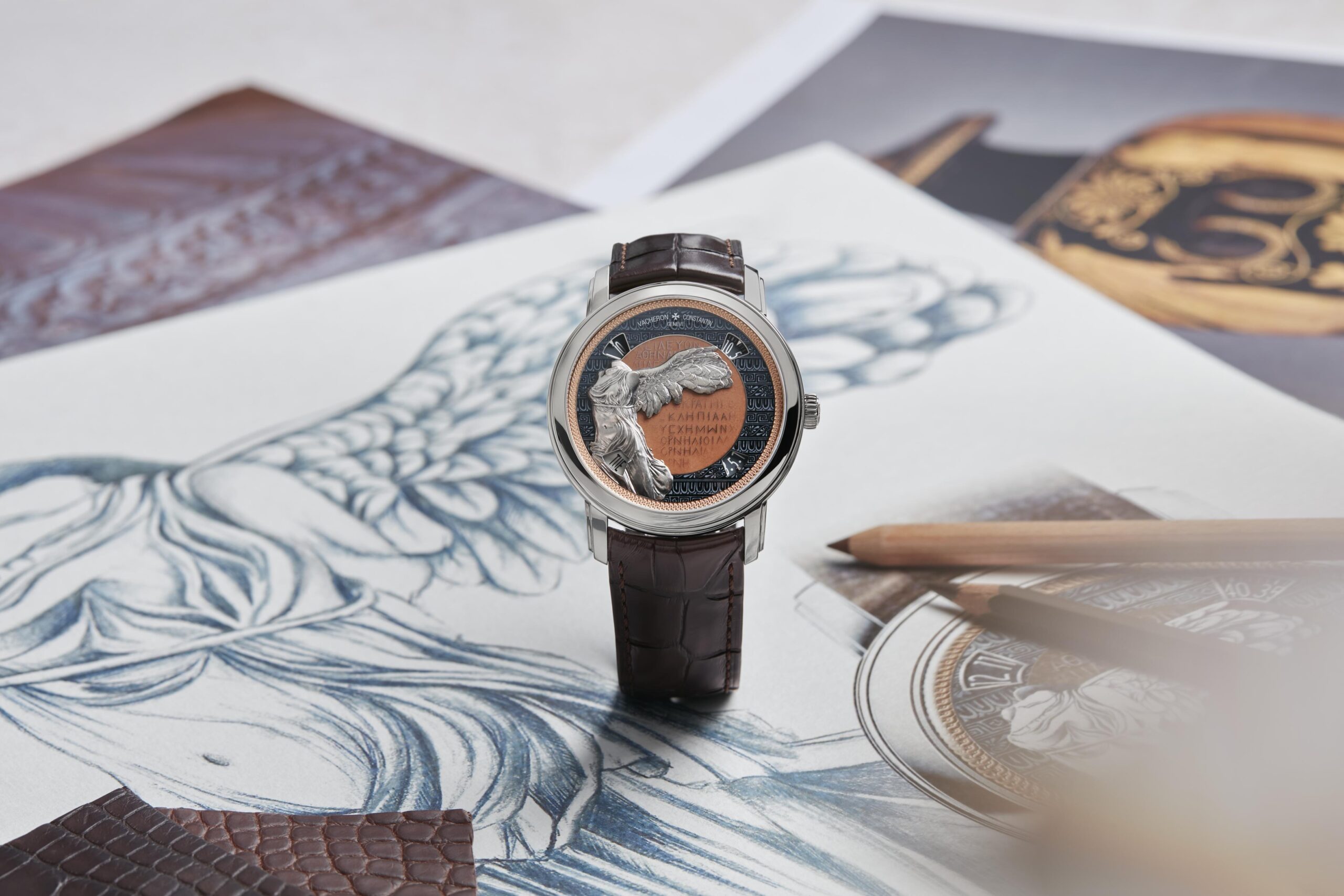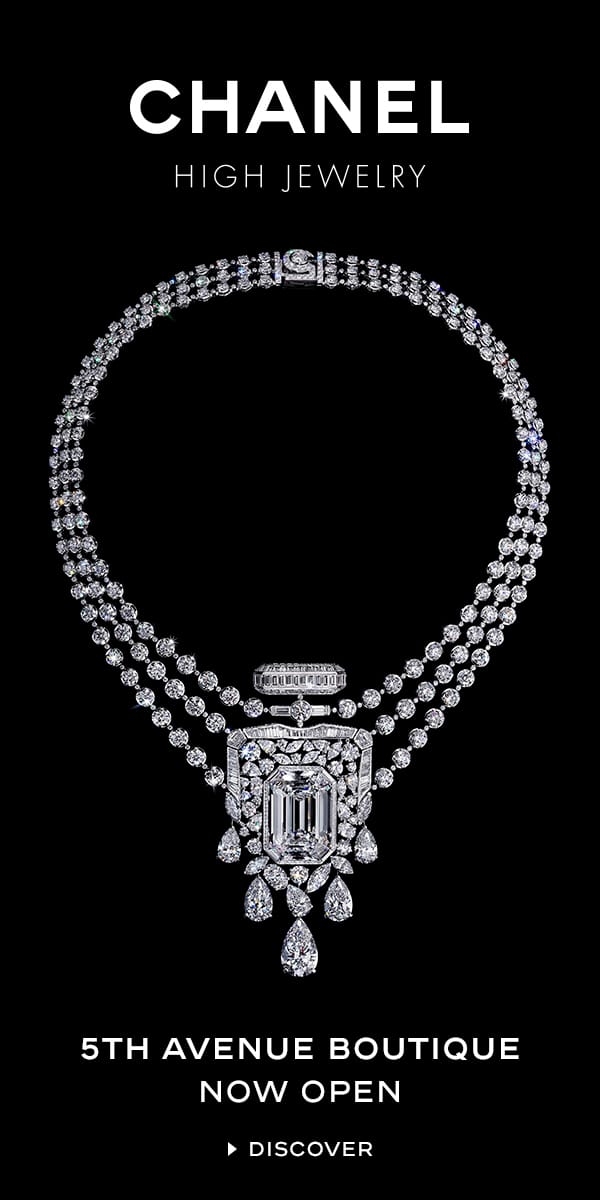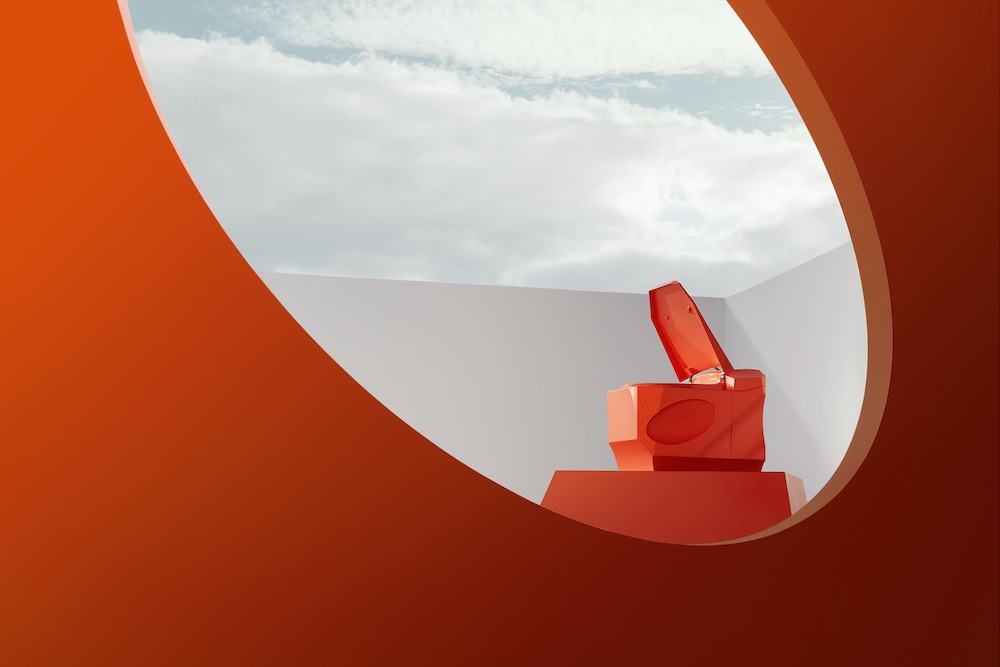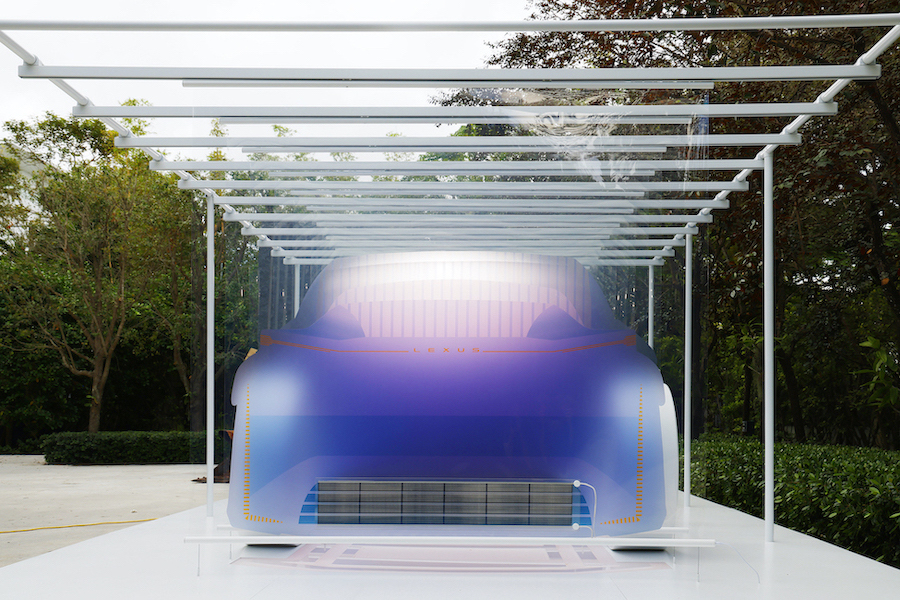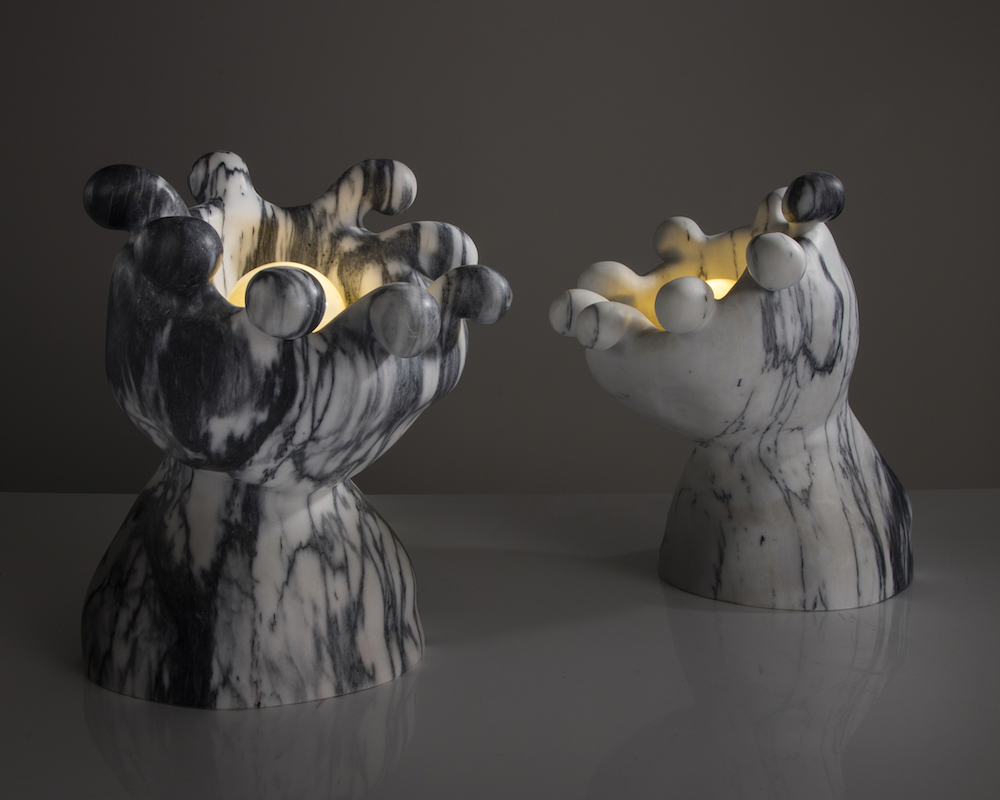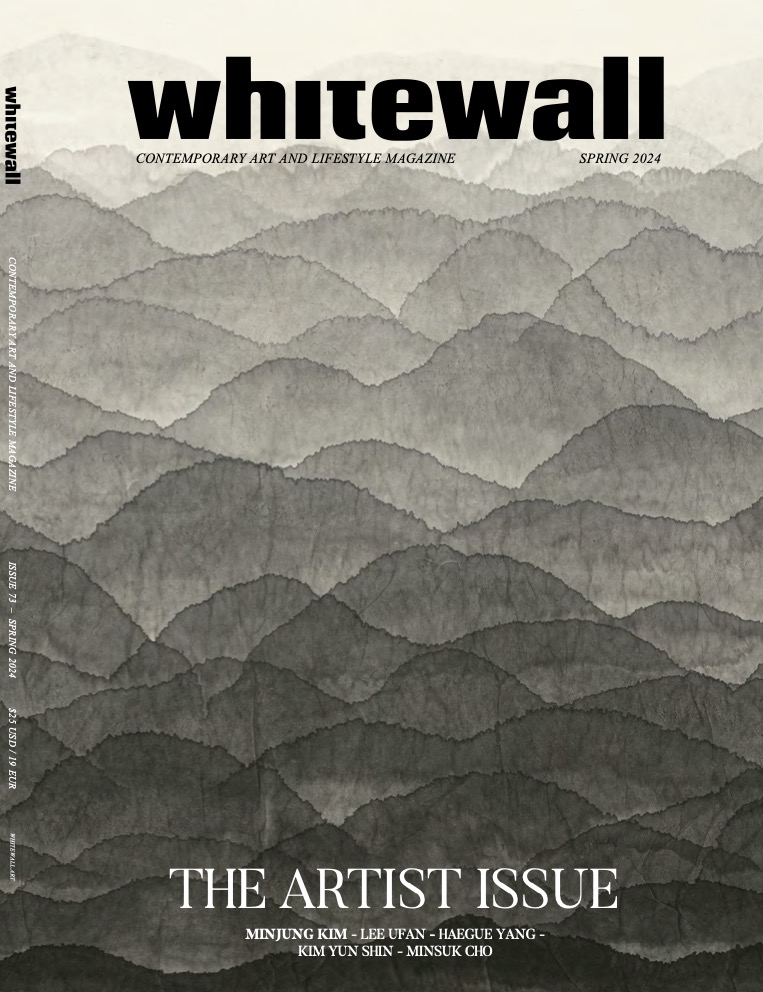Last month, a very special fashion exhibition closed in New York City. “Design in Motion: A New York City Ballet Fall Fashion Gala Retrospective” (September 24–October 20, 2019) was on view in Chelsea at INTERSECT BY LEXUS—a unique space designed by Masamichi Katayama of Wonderwall that allows for guests to explore the ethos of the Lexus lifestyle. The recent exhibition was undoubtedly a part of that Lexus lifestyle, highlighting 28 designers’ costumes from the New York City Ballet (NYCB).
Whitewall spoke with the NYCB’s Director of Costumes, Marc Happel, about his role, the company’s recent Fall Fashion Gala, and the intricate process of collaborating with designers on ballet costumes.
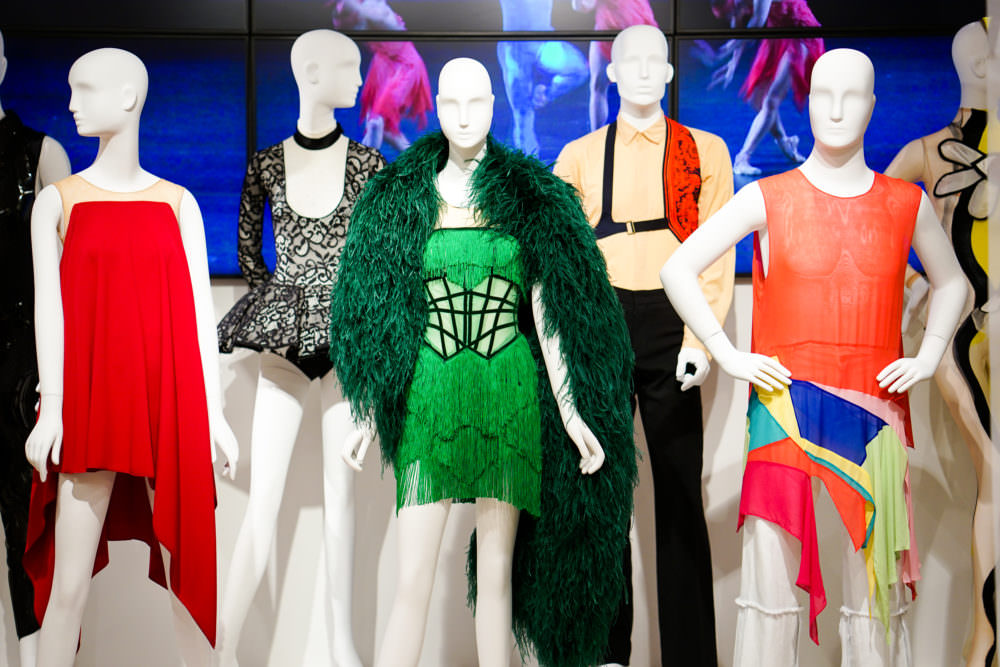
Courtesy of the New York City Ballet and Lexus.
WHITEWALL: Can you give us a look into your past before joining the NYCB?
MARC HAPPEL: Before coming to work at NYCB, I worked with the Metropolitan Opera Costume Department, and did a wide variety of Broadway, off-Broadway and film work.
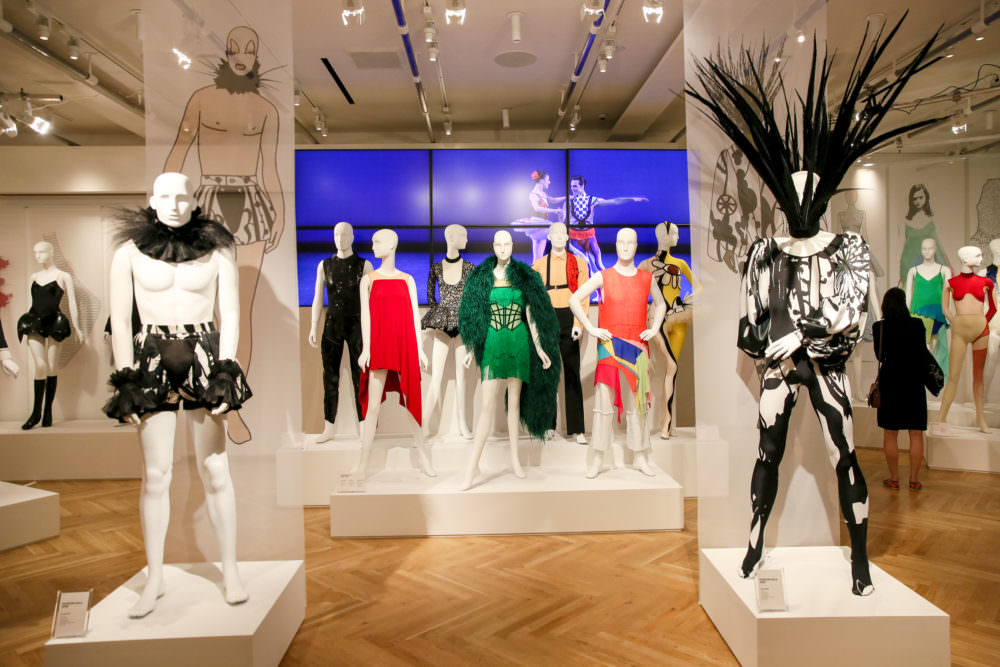
Courtesy of the New York City Ballet and Lexus.
WW: Tell us a bit about what your role entails today as director of costumes at the NYCB.
MH: I am tasked with maintaining the “look” of NYCB in terms of our costuming, particularly the look of our Balanchine repertory with costume designs by Barbara Karinska and other great designers of the past. I need to be sure the costumes look fresh and fit our dancers well. I also need to help move things forward, meeting with our artistic staff to find ways that our costumes can continue to work for our modern dancers. I am always meeting with designers and vendors, doing costume fittings, sourcing fabrics and trims, researching original designs, and watching dress rehearsals to make sure the costumes are working on stage. I also have the opportunity to bring some of my own designs to the stage, creating costumes for both new and existing works.
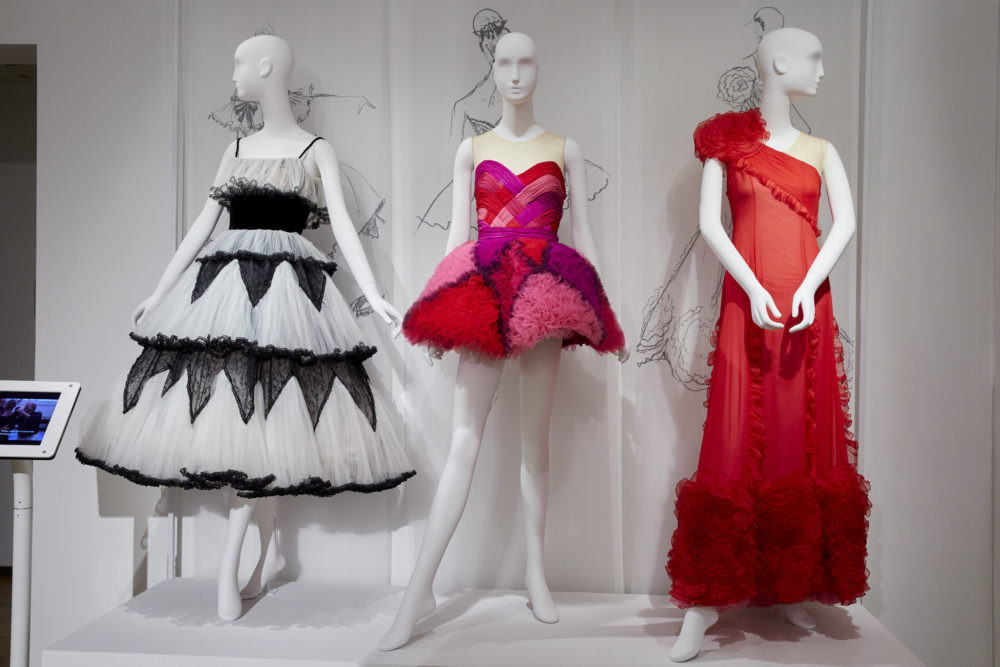
Courtesy of the New York City Ballet and Lexus.
WW: The NYCB recently celebrated its 8th annual Fall Fashion Gala. Tell us a bit about this monumental event.
MH: The event was conceived by NYCB Board Vice Chair Sarah Jessica Parker, and launched in 2012 with a gala celebration of Valentino. Since then we’ve worked with 28 fashion designers and 16 choreographers to put new work and designs on our stage and raise more than $20 million dollars for the company. Every costume is made in house by the incredible staff of our NYCB Costume Shop. The caliber and diversity of what we’ve created over the years is unbelievable.
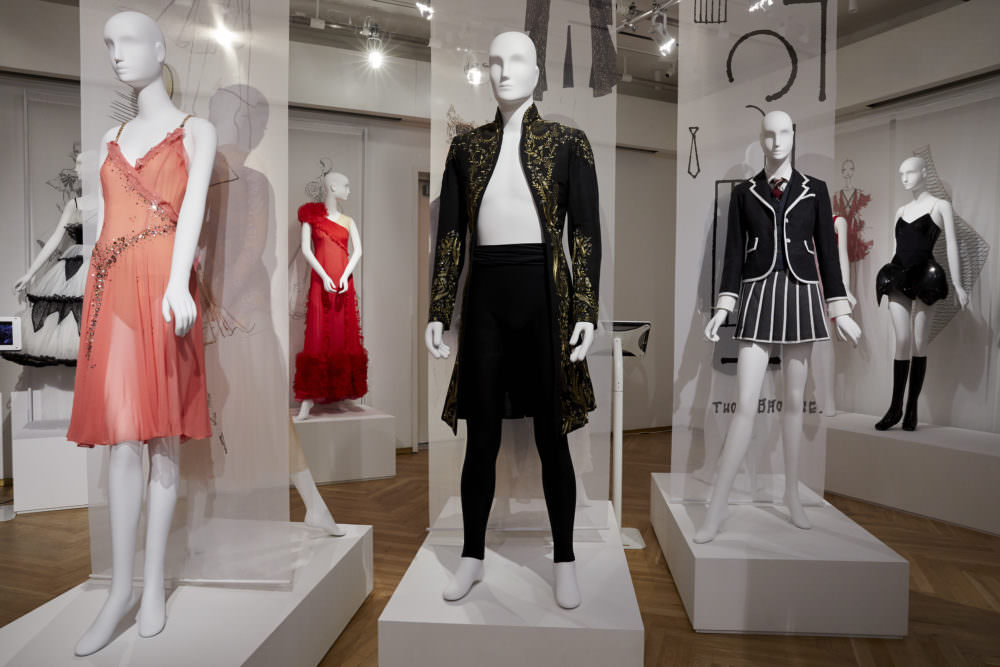
Courtesy of the New York City Ballet and Lexus.
WW: Can you walk us through the retrospective “Design in Motion” currently on view at INTERSECT BY LEXUS?
MH: I think what is most interesting about this exhibit is seeing all these costumes together in one place—the variety of designs we’ve put on the stage over the years is impressive to see. There’s the incredible beading that was done in India for Carolina Herrera’s designs for Morgen, the beautiful ombre chiffon that makes up the skirts for Alberta Ferretti’s Judah costumes, the intricately embroidered coat designed by Sarah Burton for Alexander McQueen for Funérailles, and the elaborate feather collar designed by Giles Deacon for The Runaway. I think it’s particularly exciting for people to see these costumes up close, opposed to on stage where the technique and intricate details can get lost in the distance. I am honored to be able to showcase the artistry and versatility of the NYCB Costume Shop, and the couture designs they’ve brought to life over the last eight years.
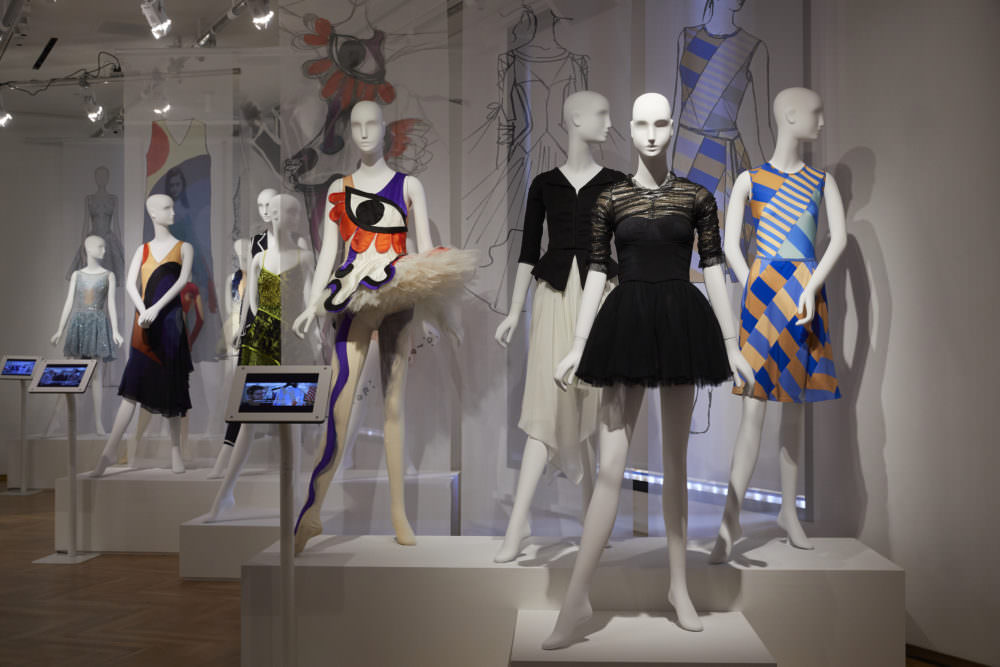
Courtesy of the New York City Ballet and Lexus.
WW: The show highlights collaborative works by 28 designers. Why are you choosing to show these?
MH: I have included at least one design from every designer or designer team who has created for the Fall Fashion Gala, so in some ways the criteria was fairly straight forward. In terms of specific selections, I had to think about many factors, particularly how a costume would look in an exhibit environment versus on stage, making sure it could stand on its own in both settings.
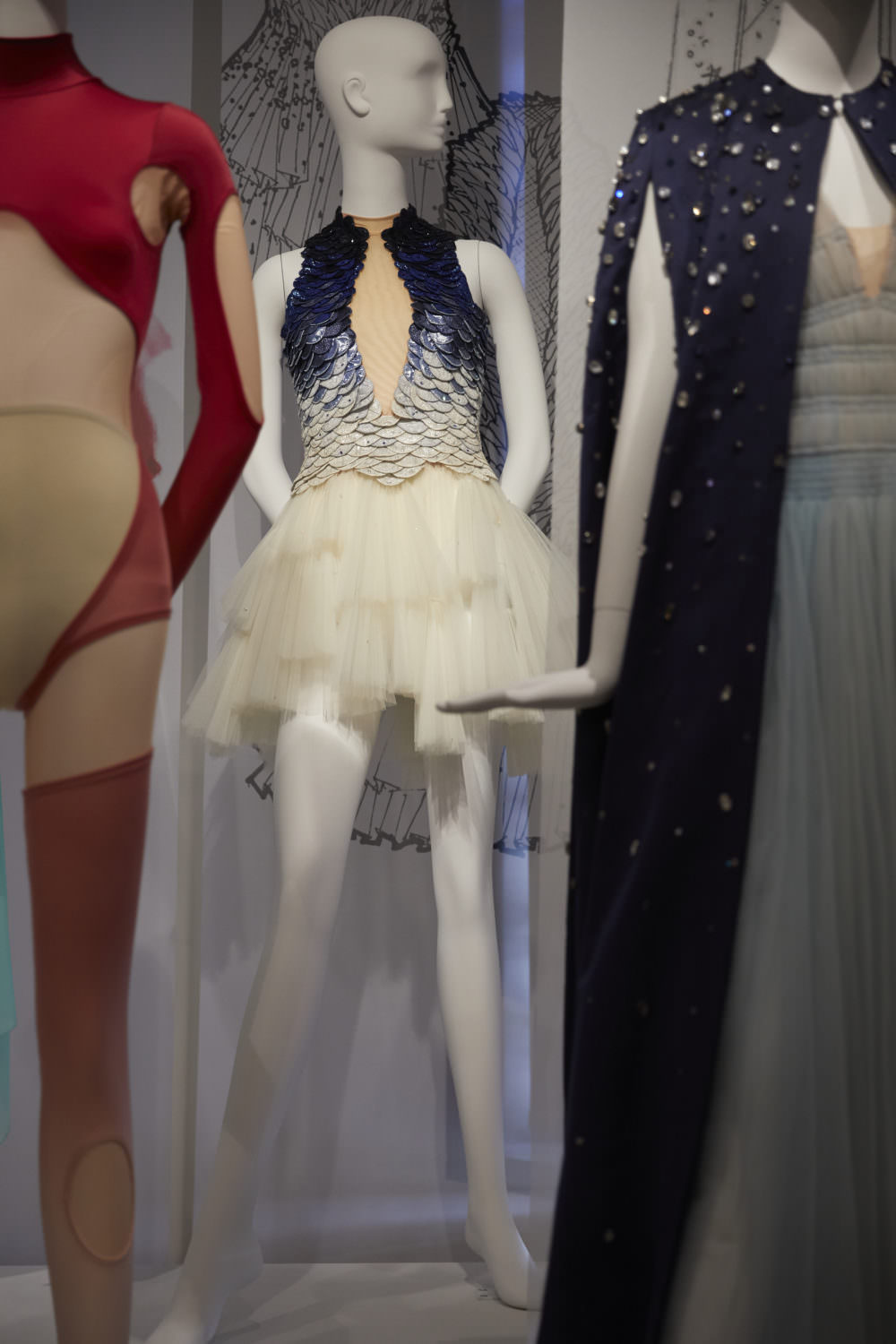
Courtesy of the New York City Ballet and Lexus.
WW: What type of designer does the NYCB gravitate toward designing with for its shows?
MH: It’s always wonderful to work with designers who appreciate dance, and the athleticism of dance, and who can imagine their designs in movement.
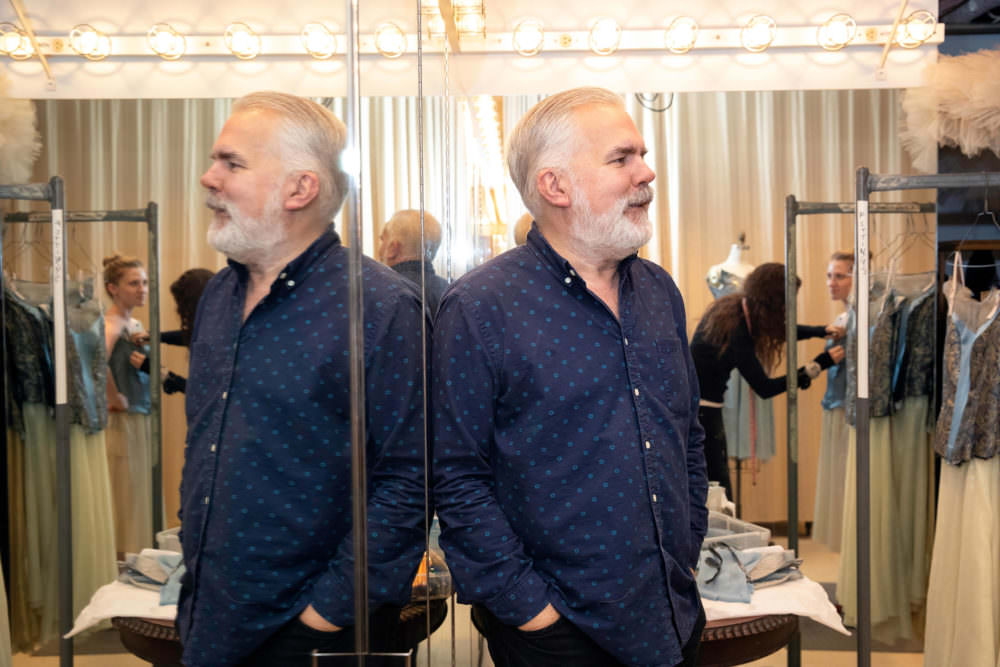
Marc Happel.
Photo by Erin Baiano.
Courtesy of the New York City Ballet and Lexus.
WW: What is the collaborative designing process like to execute these costumes? Where does it begin and end?
MH: It is an intricate process—helping fashion designers realize their two-dimensional vision into a three-dimensional costume. There is an incredible amount of give and take, collaboration, and comprise in order to arrive at something that is both beautiful and danceable. What I’ve really learned over the years is how to talk to fashion designers in a way that helps them understand our world and how they can bring their designs into it, in a way that works for the ballet but still has their unique fingerprint.
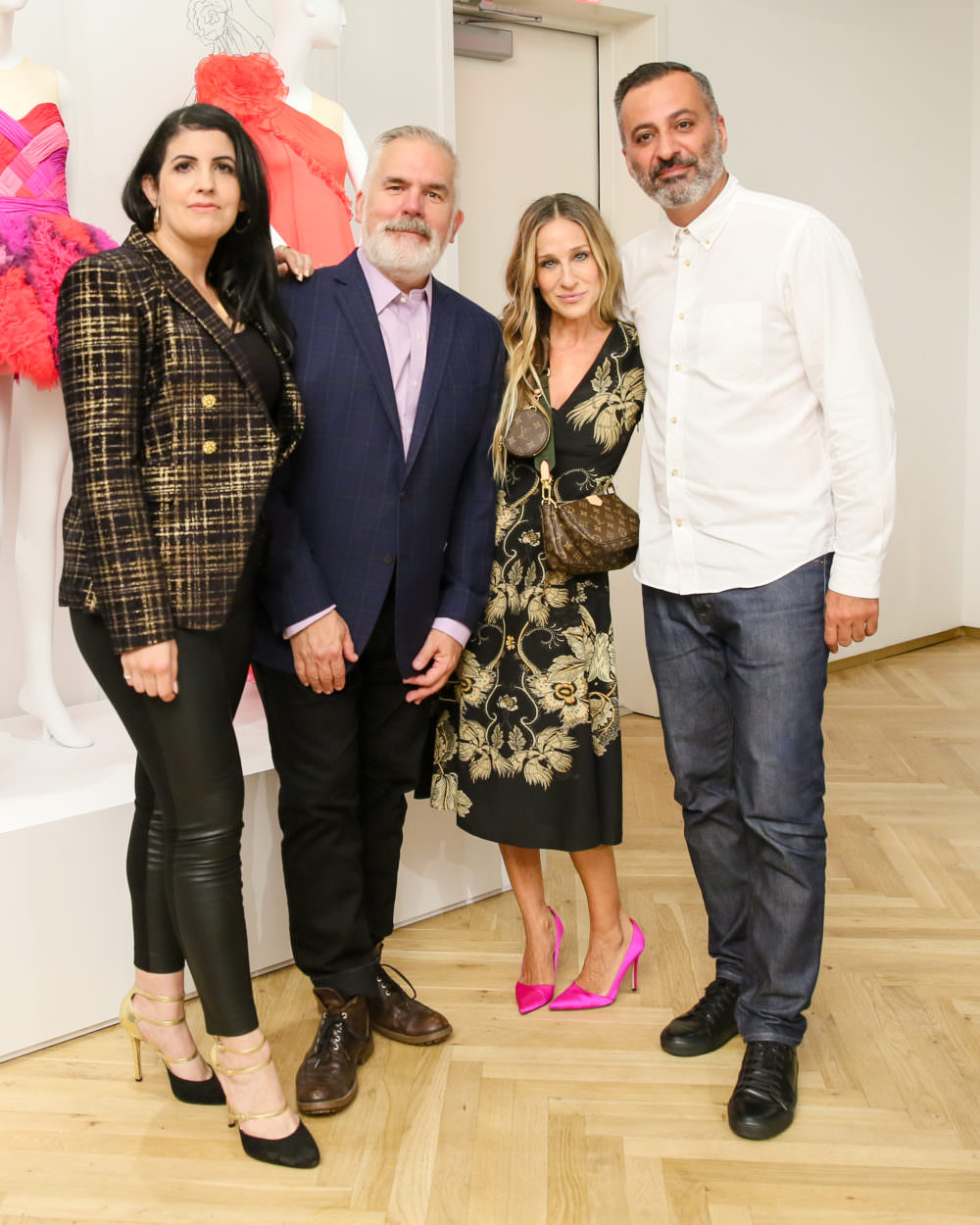
Rachel Espersen, Marc Happel, Sarah Jessica Parker, Mazdack Rassi.
Courtesy of the New York City Ballet and Lexus.
WW: Costuming is an art form that embraces beauty, art, and transformation. Why are you in the field of costuming?
MH: I like the collaborative nature of the work. Creating costumes requires a true collaboration between designers, choreographers, directors, dancers—everyone. It’s a wonderful environment to work in. I also just love New York City Ballet. The company’s history, the variety of our repertory, and our constant commitment to new work.
